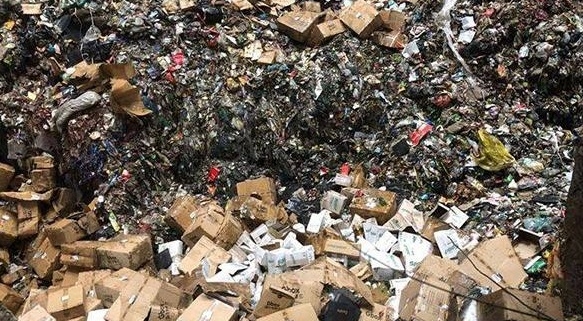1. More attention is paid to end disposal of recycling, and less attention is paid to the whole-process governance of the whole industry
Regardless of policy, technology, or market-oriented solid waste disposal in China, there are many processes focused on disposal, and there are few issues based on overall industry considerations.
From a policy perspective, the state provides fund subsidies for enterprises dismantling waste electronic and electrical appliances, but the fund revenue and expenditure are not balanced, the policy effect is to be evaluated, and the scope of implementation needs to be expanded.
From a practical point of view, taking the construction of a waste-free city as an example, various places have launched waste incineration and landfill plants in order to break the “garbage siege”, but the progress of the “two networks” of renewable resource recycling network and garbage classification and sanitation network has been slow, and urban construction only focuses on city appearance “Face” is beautiful, but the land planning for garbage sorting and storage related to urban “detoxification and beauty” is constantly shrinking.
On the whole, there is more “verbal attention” to source reduction, cleaner production and circular economy, and less “practical actions”, and most of them still focus on end-point pollution control.
2. A single environmental element pays more attention to it, and a water-based solid waste multi-element system pays less attention
From the perspective of environmental factors, the prevention and control of solid waste pollution involves multiple factors such as air, water, soil, and solid waste, which are interrelated and indivisible. In the past, there were usually many concerns about a single element, which led to the prevention and control of solid waste pollution “a symptom but not a root cause.”
Take the protection and restoration of the Yangtze River as an example. Pollution problems are complex and intertwined. Water pollution is manifested in the water, but the roots are “on the shore and in the water.” The heavy chemical industry in the Yangtze River Basin is intensive. According to the statistics of relevant departments of the provinces and cities along the Yangtze River Economic Belt, a total of 16,000 chemical industry projects have been added to the Yangtze River Economic Belt from 2007 to 2017, of which 1/4 are located within 5 kilometers of the coastline. There are 62 chemical parks along the Yangtze River, and more than 250 types of hazardous chemicals are produced and transported. Solid waste and hazardous waste have not been effectively disposed of. In some areas, smelting residues and domestic garbage are piled up in the open air, and anti-seepage treatment is not in place. The safety risk of tailings ponds is high, which seriously threatens the ecological environment of the Yangtze River.
3. More attention is paid to normalized pollution prevention, but less attention is paid to emergency response and long-term collaborative management
From the perspective of normalized management, various localities have comprehensively considered factors such as the size of the local population and the number of medical institutions, the daily amount of medical waste generated and the treatment cost, etc., and have built centralized medical waste treatment facilities that basically meet the normalized management of the region. However, from the perspective of emergency management, the sudden new crown pneumonia epidemic has exposed China’s serious shortage of medical waste emergency disposal capabilities, the coordination of medical waste and hazardous waste, the coordination of fixed facilities and mobile equipment, and the poor co-processing of solid waste in adjacent areas.



